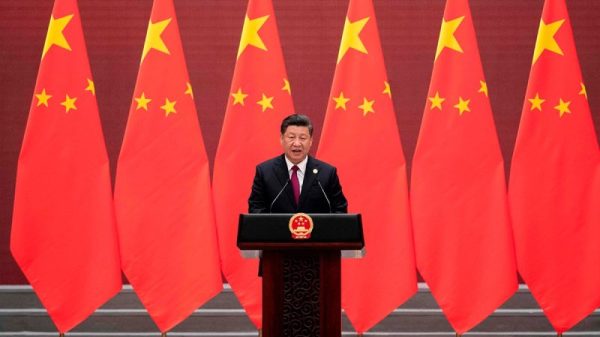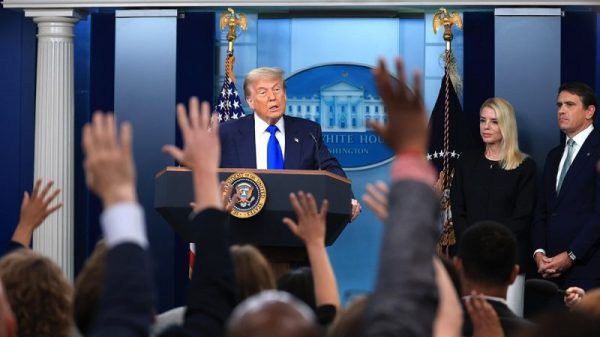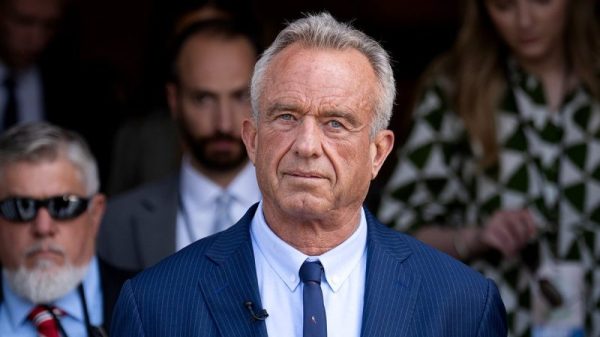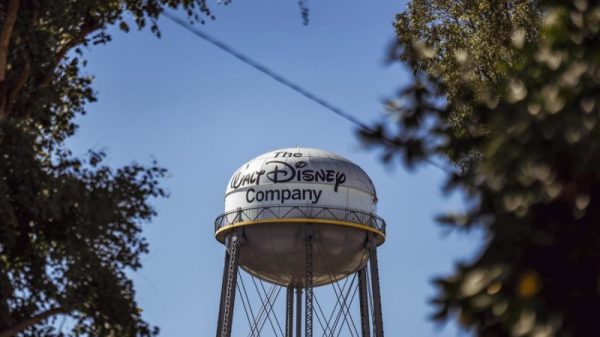At one point in the indictment handed down against former president Donald Trump earlier this month, special counsel Jack Smith delineates three memos in which the campaign’s plan to push forward invalid slates of electors took shape.
One, written on Dec. 6, 2020, “marked a sharp departure” from a previous iteration of the scheme, transitioning from a fail-safe means of assuring that Trump might have electors at his disposal should the election results shift (as occurred in Hawaii in 1960) to simply creating slates of electors that could be slotted in to replace those validated by the election results.
The New York Times obtained a copy of the memo, written by Trump attorney (and presumed indictment co-conspirator) Kenneth Chesebro. Chesebro called it “a bold, controversial strategy” — which is putting it mildly — and admitted that “there are many reasons why it might not end up being executed on January 6,” the day that Vice President Mike Pence was slated to count and formalize the election results.
But even as this idea was slowly broadening out within Trump’s sphere of advisers and allies, other efforts were working to bolster the possibility of success on Jan. 6. It’s generally recognized that the scheme to preserve Trump’s presidency despite his loss in the 2020 election was multifaceted, but it’s worth articulating explicitly the ways in which the Chesebro plan sat alongside other, equally “bold” and “controversial” efforts.
Let’s consider just the period from Nov. 1, 2020, to Jan. 20, 2021 — from a few days before the election to the day Trump ultimately left office. There are numerous moments in which the efforts to block Joe Biden’s victory built on one another, moments that generally fall into three tracks. There was the effort to build outrage at the election results, the effort to keep states from finalizing their results and, finally, the effort to replace valid electors with invalid ones.
Let’s start with that first effort.
This actually began well before the election, with Trump in March and April 2020 beginning to frame mail-in ballots — increasingly popular, given the pandemic — as Democratic schemes to steal votes. By summer, he and his allies were promoting a range of bizarre and often delusional claims about mail-in ballots.
Ultimately, someone in Trumpworld figured out how to use this to their advantage. On Nov. 1, Axios reported that Trump planned to use the gap between quickly counted Election Day votes (expected to favor him) and slowly counted mail-in ballots (expected to favor Biden) to pretend that the election was being stolen from him. The reality was that he’d already lost, of course, with the cast votes showing that slowly being counted. But he’d spent months setting the groundwork for the claim. On Election Day, Nov. 3, he put the idea into motion.
By Nov. 7, the day the election was called, Trump’s arguments that the election was stolen were well established. A week later, on Nov. 14, the first D.C. protest in opposition to Trump’s loss was held. Violence erupted. Nearly a month later, on Dec. 12, there was another D.C. protest, with the same result.
On Dec. 18, after electors had been selected, Trump held a lengthy meeting at the White House in which his outside advisers vied for the power to prove their conspiracy theories correct. Early the following morning, on Dec. 19, Trump for the first time pointed his supporters to Jan. 6.
Peter Navarro releases 36-page report alleging election fraud ‘more than sufficient’ to swing victory to Trump https://t.co/D8KrMHnFdK. A great report by Peter. Statistically impossible to have lost the 2020 Election. Big protest in D.C. on January 6th. Be there, will be wild!
— Donald J. Trump (@realDonaldTrump) December 19, 2020
Outside groups, working with the White House, put together a program focused on Jan. 6. On Jan. 3, Trump announced that he would be speaking on Jan. 6. He did. The rest is quite literally history.
There was a lull in Trump’s stolen-election rhetoric until he left office. But since then it has continued. It continues to this day, in fact, with the same intent: stoke the anger of his supporters at their shared opponents.
One of the first things that Trump tried to do after he lost the election was to parlay his arguments about fraud into actual shifts in the results. He lost on Nov. 3 and, for the next 40 days or so, worked along a variety of avenues to halt the certification of votes or to reshape the vote tallies.
You’ll remember that Trump demanded that vote-counting stop in states like Pennsylvania where he was ahead. In other states, where he was trailing, he insisted that every vote be counted. As states moved toward finalizing their votes, he worked to prevent them from doing so.
The most explicit effort came in Michigan. There, pro-Trump members of the Wayne County Board of Canvassers attempted to block the finalization of votes from the home of heavily pro-Biden Detroit. Enormous public pressure eventually forced them to do the right thing, though Trump would continue to suggest that the board could reverse the decision. He also tried to pressure the state legislature into opposing the final results, inviting Republican officials to the White House.
As the Dec. 8 “safe harbor” date for certifying votes approached, Trump kept up the pressure. On Nov. 30, he called Arizona Gov. Doug Ducey (R) as Ducey was signing the certification. Ducey sent him to voice mail.
Every state certified its results in time for electors to be selected on Dec. 14. But Trump kept trying to unring that bell. On Jan. 2, for example, he called Georgia Secretary of State Brad Raffensperger (R) to get that state to reverse its certification. This was the play even into Jan. 6, when Trump told the audience at his speech that states wanted the opportunity to revisit their results.
Those claims sat on top of the outrage Trump had been stoking, this idea that the results were suspect. And the idea that states wanted to revisit their results was ultimately central to Chesebro’s fake elector ploy.
Chesebro’s first memo, the one offering alternate slates of electors as a contingency, was produced on Nov. 18. Similar schemes were under consideration well before that. An Atlantic article by Barton Gellman published in October 2020 described an adjacent idea:
Regardless, the first Chesebro memo is the first identified in Smith’s indictment. It was followed by the one on Dec. 6 and then one on Dec. 9, explaining the logistics of casting (invalid) pro-Trump votes. On Dec. 14, the electors met — though some of the chosen electors balked at the plan.
For the plan to work, Trump at first focused on building up a contingent of members of Congress who would object to the official electoral votes those states had submitted. A number of House Republicans quickly agreed to do so. By late December, over the objections of Senate Majority Leader Mitch McConnell (R-Ky.), so did senators. On Dec. 30, Sen. Josh Hawley (R-Mo.) announced that he would offer an objection on Jan. 6.
Trump and his allies also put pressure on Pence to either reject the electors out of hand or to send electors back to states for reconsideration. The Pence plan was articulated in two memos from Trump’s lawyer (and presumed indictment co-conspirator) John Eastman. An initial draft was shown to Sen. Mike Lee (R-Utah) on or around Jan. 2. A moderated one was ready by Jan. 4, according to the book “Peril.” Pence and his team were repeatedly confronted in this same period to act on Trump’s behalf — pressure that continued into Jan. 6 itself.
But it didn’t work.
These are not the only efforts, of course, and not the only components of those efforts. There were lawsuits aimed at blocking the vote results. There was a ploy to overhaul the leadership at the Justice Department to cast doubt on the security of the election. But, in general, it was these stacked schemes that became Trump’s intended means for securing a second term in office.
Build doubt. Undermine the election results. Flip the electors. Luckily for American democracy, it didn’t work.
A previous version of this article misspelled the last name of Trump attorney Kenneth Chesebro. The article has been corrected.
At one point in the indictment handed down against former president Donald Trump earlier this month, special counsel Jack Smith delineates three memos in which the campaign’s plan to push forward invalid slates of electors took shape.
One, written on Dec. 6, 2020, “marked a sharp departure” from a previous iteration of the scheme, transitioning from a fail-safe means of assuring that Trump might have electors at his disposal should the election results shift (as occurred in Hawaii in 1960) to simply creating slates of electors that could be slotted in to replace those validated by the election results.
The New York Times obtained a copy of the memo, written by Trump attorney (and presumed indictment co-conspirator) Kenneth Chesebro. Chesebro called it “a bold, controversial strategy” — which is putting it mildly — and admitted that “there are many reasons why it might not end up being executed on January 6,” the day that Vice President Mike Pence was slated to count and formalize the election results.
But even as this idea was slowly broadening out within Trump’s sphere of advisers and allies, other efforts were working to bolster the possibility of success on Jan. 6. It’s generally recognized that the scheme to preserve Trump’s presidency despite his loss in the 2020 election was multifaceted, but it’s worth articulating explicitly the ways in which the Chesebro plan sat alongside other, equally “bold” and “controversial” efforts.
Let’s consider just the period from Nov. 1, 2020, to Jan. 20, 2021 — from a few days before the election to the day Trump ultimately left office. There are numerous moments in which the efforts to block Joe Biden’s victory built on one another, moments that generally fall into three tracks. There was the effort to build outrage at the election results, the effort to keep states from finalizing their results and, finally, the effort to replace valid electors with invalid ones.
Let’s start with that first effort.
This actually began well before the election, with Trump in March and April 2020 beginning to frame mail-in ballots — increasingly popular, given the pandemic — as Democratic schemes to steal votes. By summer, he and his allies were promoting a range of bizarre and often delusional claims about mail-in ballots.
Ultimately, someone in Trumpworld figured out how to use this to their advantage. On Nov. 1, Axios reported that Trump planned to use the gap between quickly counted Election Day votes (expected to favor him) and slowly counted mail-in ballots (expected to favor Biden) to pretend that the election was being stolen from him. The reality was that he’d already lost, of course, with the cast votes showing that slowly being counted. But he’d spent months setting the groundwork for the claim. On Election Day, Nov. 3, he put the idea into motion.
By Nov. 7, the day the election was called, Trump’s arguments that the election was stolen were well established. A week later, on Nov. 14, the first D.C. protest in opposition to Trump’s loss was held. Violence erupted. Nearly a month later, on Dec. 12, there was another D.C. protest, with the same result.
On Dec. 18, after electors had been selected, Trump held a lengthy meeting at the White House in which his outside advisers vied for the power to prove their conspiracy theories correct. Early the following morning, on Dec. 19, Trump for the first time pointed his supporters to Jan. 6.
Peter Navarro releases 36-page report alleging election fraud ‘more than sufficient’ to swing victory to Trump https://t.co/D8KrMHnFdK. A great report by Peter. Statistically impossible to have lost the 2020 Election. Big protest in D.C. on January 6th. Be there, will be wild!
— Donald J. Trump (@realDonaldTrump) December 19, 2020
Outside groups, working with the White House, put together a program focused on Jan. 6. On Jan. 3, Trump announced that he would be speaking on Jan. 6. He did. The rest is quite literally history.
There was a lull in Trump’s stolen-election rhetoric until he left office. But since then it has continued. It continues to this day, in fact, with the same intent: stoke the anger of his supporters at their shared opponents.
One of the first things that Trump tried to do after he lost the election was to parlay his arguments about fraud into actual shifts in the results. He lost on Nov. 3 and, for the next 40 days or so, worked along a variety of avenues to halt the certification of votes or to reshape the vote tallies.
You’ll remember that Trump demanded that vote-counting stop in states like Pennsylvania where he was ahead. In other states, where he was trailing, he insisted that every vote be counted. As states moved toward finalizing their votes, he worked to prevent them from doing so.
The most explicit effort came in Michigan. There, pro-Trump members of the Wayne County Board of Canvassers attempted to block the finalization of votes from the home of heavily pro-Biden Detroit. Enormous public pressure eventually forced them to do the right thing, though Trump would continue to suggest that the board could reverse the decision. He also tried to pressure the state legislature into opposing the final results, inviting Republican officials to the White House.
As the Dec. 8 “safe harbor” date for certifying votes approached, Trump kept up the pressure. On Nov. 30, he called Arizona Gov. Doug Ducey (R) as Ducey was signing the certification. Ducey sent him to voice mail.
Every state certified its results in time for electors to be selected on Dec. 14. But Trump kept trying to unring that bell. On Jan. 2, for example, he called Georgia Secretary of State Brad Raffensperger (R) to get that state to reverse its certification. This was the play even into Jan. 6, when Trump told the audience at his speech that states wanted the opportunity to revisit their results.
Those claims sat on top of the outrage Trump had been stoking, this idea that the results were suspect. And the idea that states wanted to revisit their results was ultimately central to Chesebro’s fake elector ploy.
Chesebro’s first memo, the one offering alternate slates of electors as a contingency, was produced on Nov. 18. Similar schemes were under consideration well before that. An Atlantic article by Barton Gellman published in October 2020 described an adjacent idea:
Regardless, the first Chesebro memo is the first identified in Smith’s indictment. It was followed by the one on Dec. 6 and then one on Dec. 9, explaining the logistics of casting (invalid) pro-Trump votes. On Dec. 14, the electors met — though some of the chosen electors balked at the plan.
For the plan to work, Trump at first focused on building up a contingent of members of Congress who would object to the official electoral votes those states had submitted. A number of House Republicans quickly agreed to do so. By late December, over the objections of Senate Majority Leader Mitch McConnell (R-Ky.), so did senators. On Dec. 30, Sen. Josh Hawley (R-Mo.) announced that he would offer an objection on Jan. 6.
Trump and his allies also put pressure on Pence to either reject the electors out of hand or to send electors back to states for reconsideration. The Pence plan was articulated in two memos from Trump’s lawyer (and presumed indictment co-conspirator) John Eastman. An initial draft was shown to Sen. Mike Lee (R-Utah) on or around Jan. 2. A moderated one was ready by Jan. 4, according to the book “Peril.” Pence and his team were repeatedly confronted in this same period to act on Trump’s behalf — pressure that continued into Jan. 6 itself.
But it didn’t work.
These are not the only efforts, of course, and not the only components of those efforts. There were lawsuits aimed at blocking the vote results. There was a ploy to overhaul the leadership at the Justice Department to cast doubt on the security of the election. But, in general, it was these stacked schemes that became Trump’s intended means for securing a second term in office.
Build doubt. Undermine the election results. Flip the electors. Luckily for American democracy, it didn’t work.
A previous version of this article misspelled the last name of Trump attorney Kenneth Chesebro. The article has been corrected.





















